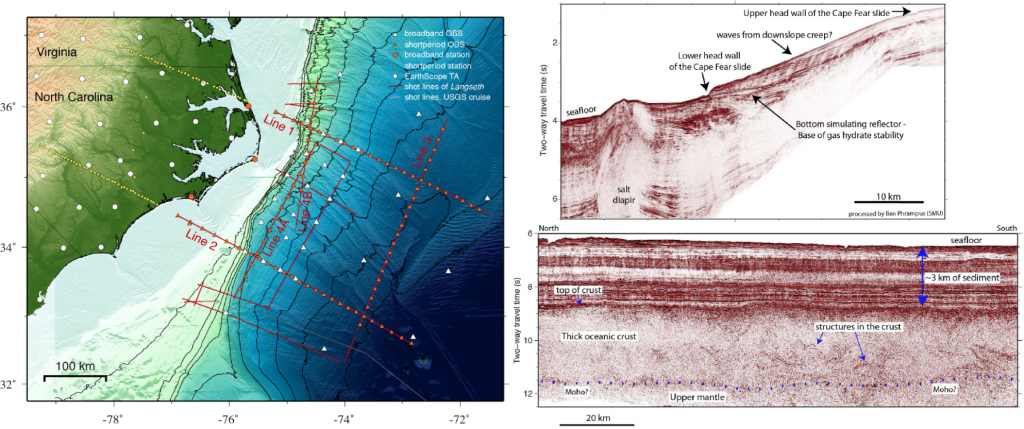In October 2014 a workshop was held to evaluate the Amphibious Array and make recommendations for potential future scientific targets. The seismic component of the Amphibious Array consists of 27 on-land broadband seismometers and 60 ocean-bottom seismometers, including 20 designed to work in shallow water. A geodetic component consisted of upgrading 232 GPS receivers in the region to high-rate real-time data collection. The Array is a community run facility, with all data being available openly as rapidly as possible.
The Array is nearing the end of its 4-year planned deployment in Cascadia, with instruments scheduled for demobilization late in 2015. The October workshop was charged with evaluating the performance and strengths of Cascadia to date and to elucidate scientific rationale for future amphibious deployments.
The Report from this workshop, as submitted to NSF, can be found at the following URL’s:
http://www.iris.edu/hq/workshops/2014/10/amphibious_array_facility_workshop

